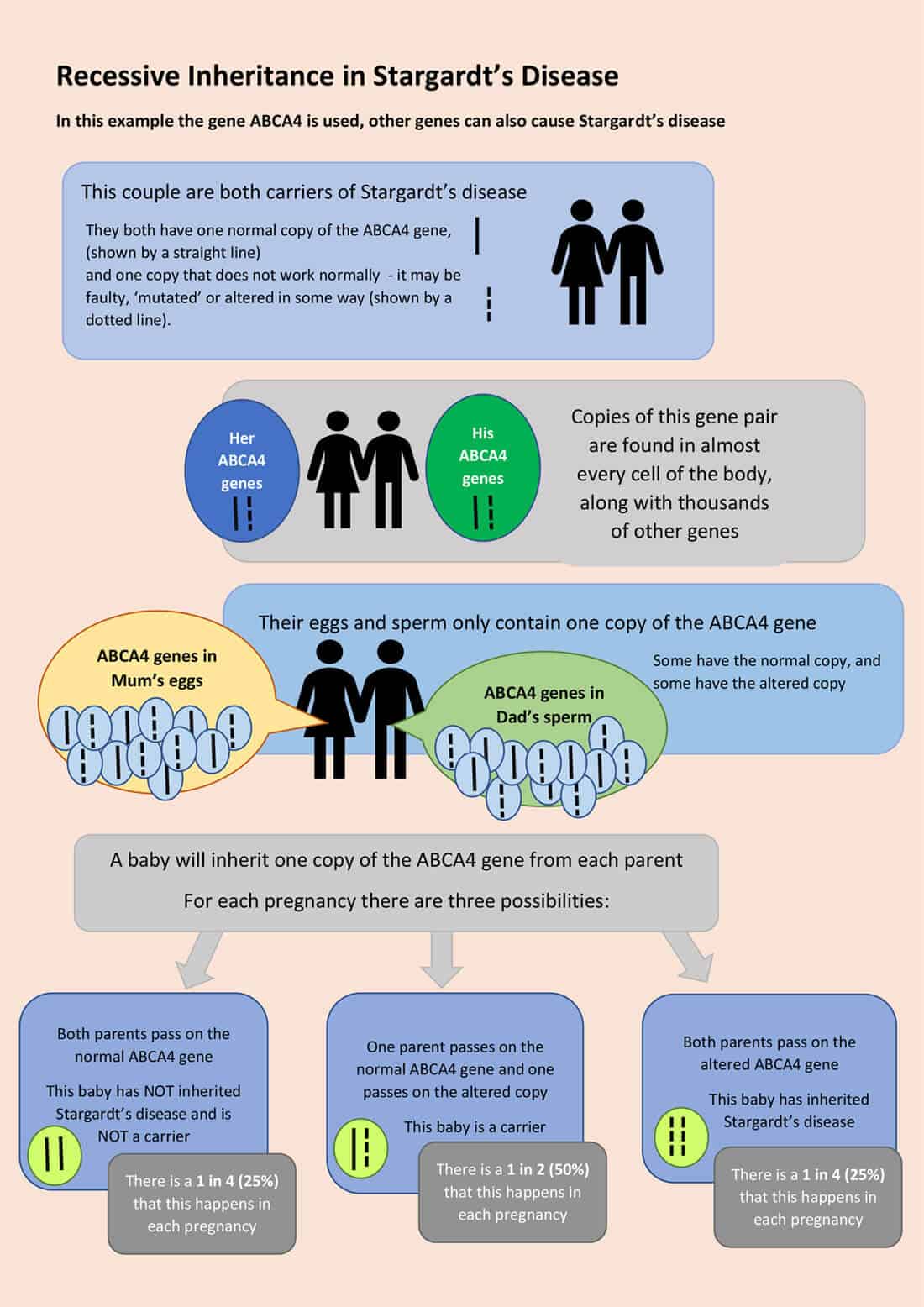Genetics and Inheritance
The most common form of Stargardt’s disease, Stargardt 1 (STGD1), is caused by genetic changes (mutations) in a gene called ABCA4 on chromosome 1. This gene provides the instruction for an adenosine triphosphate (ATP)-binding cassette transporter found in the light-sensing (photoreceptor) cells of the retina. Genetic changes in the ABCA4 gene cause defects in the function of this transporter resulting in the accumulation of toxic waste products (lipofuscin pigments) which over time cause retinal cell death.
Stargardt 1 is passed on in families in an autosomal recessive pattern. This means that someone with the condition will have two changed copies of the ABCA4 gene. They will have inherited one changed copy from their mother and the other from their father. Someone with one changed and one working copy of the ABCA4 gene is a carrier of Stargardt 1. Carriers do not have symptoms of the condition.
Each full sibling of someone with Stargardt 1 has a one in four, or 25%, chance of inheriting the condition. This chance is the same for males and females.
When someone with Stargardt 1 has children with an unrelated partner, the chance of a child inheriting the condition is about one in 100 or 1%.
Less commonly people can have a disorder that looks like Stargardt’s but it is due to a different gene. Other known genes include the ELOVL4 gene (causing STGD3), PROM1 gene (causing STGD4) and RDS gene (also known as PRPH2). The disorder originally suggested to be STGD2 was subsequently found to be caused by the same gene as STGD3.
Stargardt’s caused by changes in the ELOVL4, PROM1 and RDS genes is inherited in an autosomal dominant pattern, which is different from that described above. For more information on dominant inheritance visit: http://www.geneticdisordersuk.org/aboutgeneticdisorders/inheritance#dominant

Further reading:
